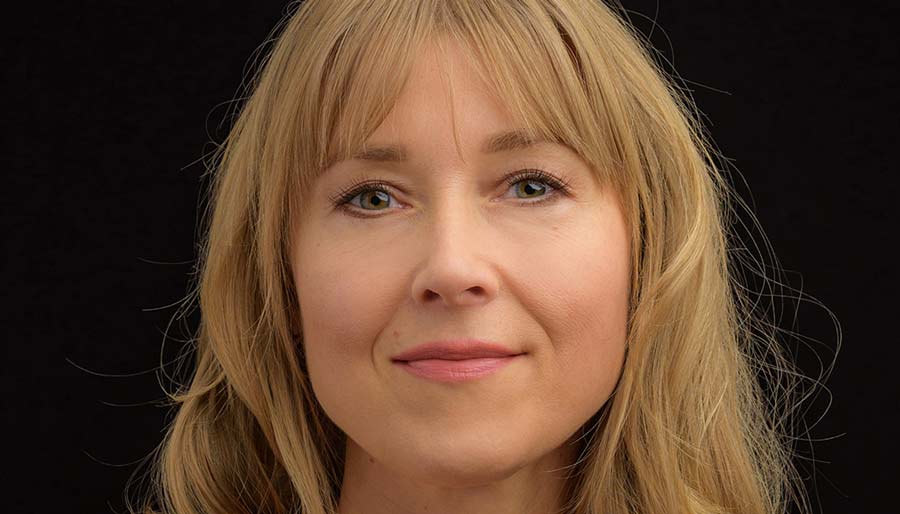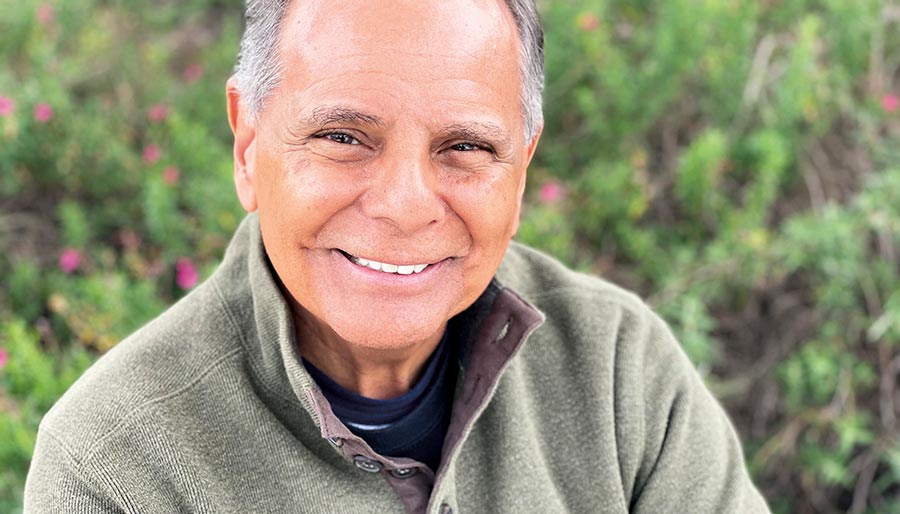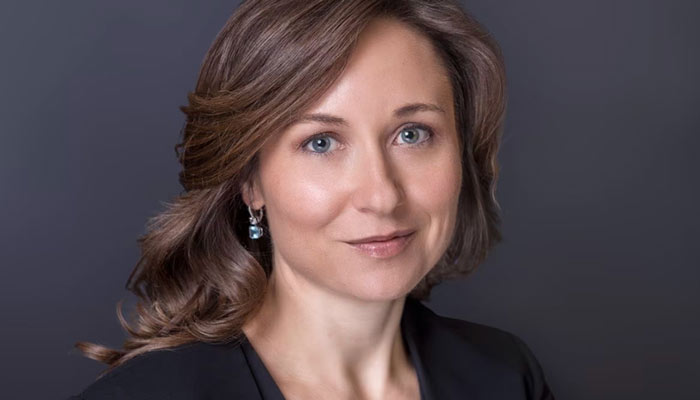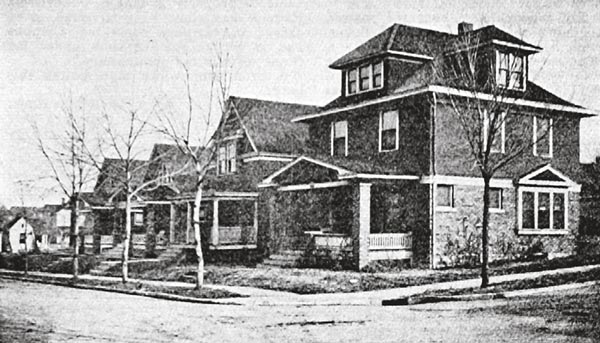Tracey Lien confronts mystery, myth in debut novel
Issue 2, 2023
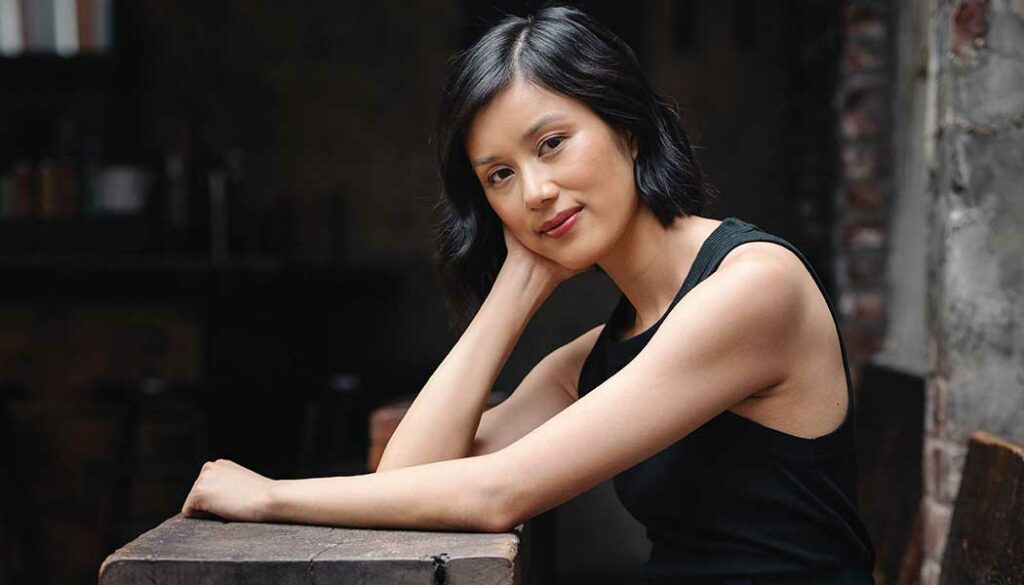
As a student in KU’s Master of Fine Arts program increative writing, Tracey Lien sometimes indulged in a bit of harmless reverie.
A daydream. A fantasy.
Lien moved to Lawrence in 2018 to begin the three-year program on the fiction-writing track, relocating from the Bay Area, where she’d covered the Silicon Valley tech beat for the Los Angeles Times after reporting on the video game industry for Vox. She’d also written a few personal essays on the side, publishing one in a small literary magazine. She was accustomed to seeing her name in print.
Fiction writing, however, was a whole new adventure.
By coming to KU, Lien was leaving a steady writing job at a major metropolitan newspaper, abandoning a profession that had been her dream career since her high school days in Sydney, Australia. She was trading a regular paycheck and a clear vocational path for a graduate school stipend and a long-shot apprenticeship in a crowded field where rewards are far from guaranteed. She was moving from a discipline built on facts, statistics and strict quotation to a realm where she would have to make things up—anathema to a reporter trained in the rigors of sourcing and confirmation and attribution, and guided by the cranky skepticism espoused by certain old hands: If your mother says she loves you, check it out.
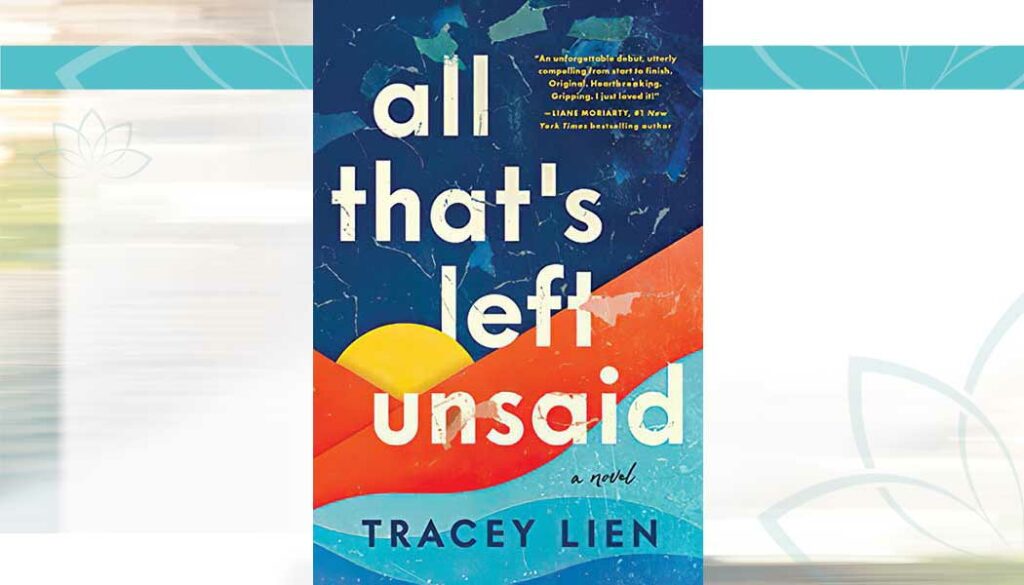
To claim one’s territory, one’s subject, is part of the fiction writer’s task. It would take Lien some time to make the transition from journalist to novelist, to determine precisely what story she was meant to tell. When she got there, with help from her teachers and fellow students in the MFA program, there was still the daunting climb of learning how to write a novel. She gave herself a daily assignment of 300 words and mapped out the plot as she wrote. Line by line, she says, “I was giving myself a chance to see if I could produce something worthwhile.”
Eventually, she began to believe she could. And that’s where the reverie
came in.
During the 2023 Indie Book Awards of Australia, presented online in March, booksellers from the country’s independent bookstores announced the winning titles, followed by brief remarks from the books’ authors. The novel that Lien, g’21, wrote at KU and sold to HarperCollins in a nine-way auction near the end of her final semester, All That’s Left Unsaid, was named Australia’s best debut novel. Speaking from her Brooklyn, New York, apartment, Lien thanked the independent booksellers who nominated and voted for her work. And she shared a story.
“When I was a grad student still writing my novel, I used to pop into independent bookstores all the time, and I would have this fantasy where I thought, ‘OK, one day, when I finish my manuscript, if I’m lucky enough to sell it and have it published, how incredible would it be to see this novel on the shelves of indie bookstores or on one of those tables where the staff pick their favorites?’” Lien said.
“So to know that not only have you all given my novel a chance, but you’ve now given it this incredible platform, I’m absolutely blown away. It means so much to me. I’ve been freaking out ever since I found out.”
All That’s Left Unsaid, published in Australia, North America and the United Kingdom last fall, is set in Cabramatta, a Sydney suburb where many Vietnamese refugees settled upon immigrating to Australia in the wake of the communist takeover that ended Vietnam’s civil war in 1975. Lien’s parents were among them, immigrating to Australia in 1979 and moving to Cabramatta shortly after. She was born in southwest Sydney in 1988. By 1996—the year most of the novel’s action takes place—the bustling enclave called “Little Vietnam” was riven by a heroin epidemic that fueled gang violence and rampant street crime.
The story begins when Ky, a young newspaper reporter who left Cabramatta for a career at a Melbourne daily, returns home after her younger brother, Denny,
a straight-A high school student, is murdered. Though the killing takes place in a crowded restaurant, none of the witnesses will cooperate with the police, who seem ready to write off Denny’s death as just another drug crime. Drawing on the skills she honed as a journalist, Ky tracks down and interviews each witness herself, each encounter bringing her closer to knowing what happened. As she grieves for her brother and copes with the guilt she feels at having left behind her family and friends—most significantly Minnie, her troubled best friend from childhood—she is drawn back into conflicts and resentments deeply rooted in her coming-of-age as an Asian Australian, an outsider estranged from both the dominant white culture and the immigrant experience of her parents.
Lien came to the story’s setting and themes only gradually. First she had to get used to the idea of writing fiction at all.
“When I arrived at KU, my stories were quite autobiographical in nature because I didn’t feel comfortable making things up, which is kind of the name of the game when it comes to fiction writing,” she says. “Because I’d been a journalist for so long, and making things up is the thing that you are definitely not meant to do, I just felt really uncomfortable with it.
“It took me about a semester to sort of loosen up and say, ‘OK, you can just make up whatever you want. You do not have to base everything on your own life.’”
That transformation was helped along by reading the work her fellow students put up for critique in the workshops that form the heart of the MFA curriculum.
“My peers were writing science fiction and fantasy, and I was like, ‘OK, that is definitely not autobiographical.’ I felt like I had permission to start playing around a bit more. And once I let go of the fear of making things up, my other journalism skills proved to be really valuable in helping me write fiction.”
A classmate noted that many of the short stories Lien was then writing seemed to be connected.
“It hadn’t occurred to me at the time,” she says, “but they pointed out that the stories were all set in this place called Cabramatta in the ’90s; all the main characters were young Asian girls who are the daughters of refugees. It really got me thinking, ‘What am I circling? I’m clearly circling an idea I’m not even conscious of.’”
Talking with Kenneth Nguyen on his podcast, “The Vietnamese,” Lien spoke of how the Cabramatta of her childhood was a microcosm of Australian attitudes toward immigration and multiculturalism.
“When in the ’90s things were pretty bad in Cabramatta, a lot of politicians looked at it and said, ‘There’s an example of why multiculturalism doesn’t work,’” Lien explained. “‘There’s an example of how some people don’t have it in them to be Australian. The problem is the refugees.’ In doing that, they were playing to xenophobia. They were playing to their own prejudices. They never stopped to think, ‘Why is this community struggling?’ Yeah, there is something wrong with this community: It’s full of untreated and undiagnosed PTSD. There are high levels of poverty. There’s not enough social support. A lot of the kids don’t feel seen or supported at school, and their teachers don’t really know how to respond to them.”
The time and the place made for a dramatic setting, but there was a hitch: As an 8-year-old, Lien had not been privy to the inner workings of gang life or the criminal justice system. To fill in those gaps, she turned to research skills learned as a journalist, tracking down academic studies through KU Libraries and combing through newspaper morgues to glean from history’s first draft a contemporary take on the era. She discovered a news brief about a fashion show interrupted by a knife fight between rival gangs. Several people were injured, but none of the 200 attendees could give firsthand accounts. “All 200 claimed to be in the bathroom when it happened,” Lien says. That small detail offered big insight into how insular and fearful of authority the community was.
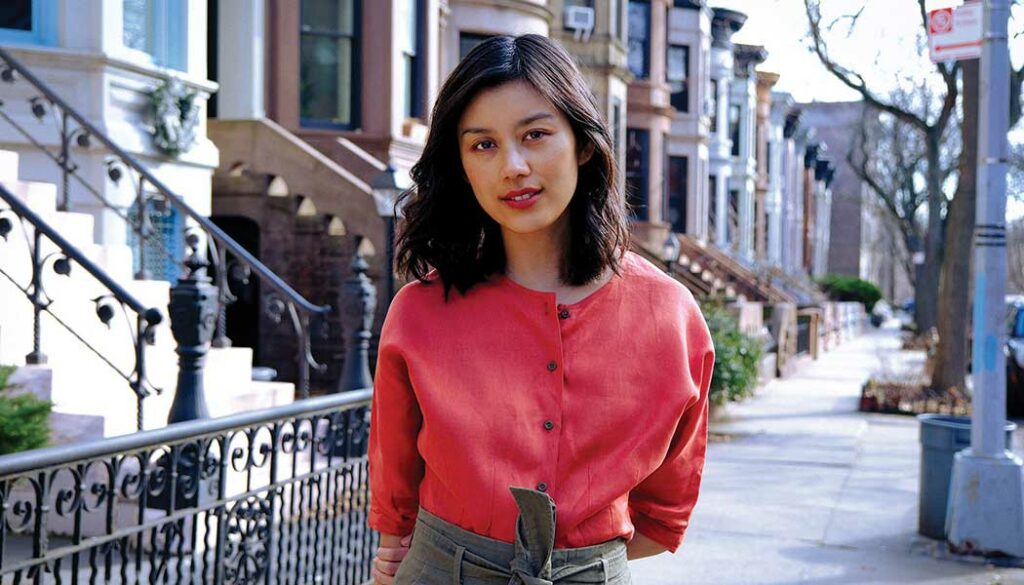
Lien showed an early draft that mixed stories and a longer narrative to Laura Moriarty, s’93, g’99, professor of creative writing. The author of American Heart and four other novels, she worked closely with Lien as she developed All That’s Left Unsaid at KU. Though Moriarty felt the experiment in melding the story and novel forms wasn’t working, she saw the strength of the material Lien was then beginning to probe and would explore fully in the completed book, which served as her master’s thesis. “It’s clear that it’s about identity: How does Ky see herself as an Australian and a person with parents who are refugees from Vietnam?” Moriarty says. “How does she see herself as opposed to her friend who did not leave the rough neighborhood that they grew up in? She is straddling two different communities.”
On Moriarty’s advice, Lien ditched the experiment with form and focused instead on writing a novel. She had been reading Jane Harper, the bestselling British-Australian crime writer, and was taken with the narrative momentum a good thriller can generate. She wanted to harness that page-turner energy to create a book that tackled serious topics but didn’t, in her words, “feel like homework.”
“Upon deciding, ‘I’m going to focus on writing a novel, I’ve got this kernel from this news clipping, I’m so inspired by Jane Harper, and I’ve been circling an idea’—all of that sort of clicked, and I was like, ‘OK, this is going to open with a murder.’”
What Lien wanted to accomplish with her book was to show people how it felt to grow up Asian in Australia in the 1990s. For that, no research was necessary.
“Growing up, I was often told, ‘Of course you’re doing well in school. You are Asian,’” she says. “‘Of course you are nerdy, because you are Asian. Of course you are quiet and reserved and shy and docile, because you are Asian.’ These are just such ridiculously generalized things to say about someone, and if you hear it often enough, you start to wonder if it’s true. Unfortunately, you might even start to live up to it, because you are not sure what else you’re allowed to be.”
What Asian immigrants are allowed to be, in Australia or America or other Western countries, she came to believe, is contingent on their behavior.
The idea she had been circling, Lien realized, was the concept of conditional citizenship.
“It’s this idea that Asian Australians and Asian Americans and Asians in the U.K. all have been told from a very young age that they belong. But really their belonging is conditional. It’s conditional on their impeccable behavior, on their gratitude, on not being perceived as threats. And the moment they cross the line in any way, they no longer belong.
“To be on the receiving end of that, it’s very confusing,” she says. “It’s painful.”
For Lien, the constant pressure and expectations—“the paper cuts I experienced throughout childhood and my early 20s,” in her recounting—caused a major transformation over time.
“I’ve seen home videos of myself as a young child, like kindergarten age, where I am the biggest ham ever,” she says, laughing. “And then I see myself in college, where I became so quiet and started to feel invisible. I was a bit more of a wallflower. When I was writing this novel, I reflected on what changed. How do I go from this attention-seeking ham to someone who feels like she doesn’t even have a voice? I think a large part of it was the external pressure to live up to the stereotype of what it meant to be Asian Australian. It was about being quiet. It was about not taking up space. It was about not challenging people, and it took a long time for me to regain the confidence to be myself again.”
That stereotype is known as the myth of the model minority, and it began in the 1960s in the United States, where it was used to hold up Asian Americans as paragons of assimilation and exemplars of how the American melting pot works.
In Learning for Justice, a magazine published by the Southern Poverty Law Center, Sarah-SoonLing Blackburn describes the model minority myth as a harmful stereotype that “perpetuates a narrative in which Asian American children are whiz kids or musical geniuses. Within the myth of the model minority, Tiger Moms force children to work harder and be better than everyone else, while nerdy, effeminate dads hold prestigious—but not leadership—positions in STEM industries like medicine and accounting.
“This myth characterizes Asian Americans as a polite, law-abiding group who have achieved a higher level of success than the general population through some combination of innate talent and pull-yourselves-up-by-your-bootstraps immigrant striving.”
Social scientists have identified many problems with the model minority myth. Far from benign, it adversely affects those who believe it, those it excludes and even those it describes. By pointing to one racial group as evidence that a society is fair and equal and open to all, the myth absolves that culture of any responsibility for inequality and lays the groundwork for judging all racial groups as a whole rather than as individuals. That creates a situation in which any group—even one purportedly held in esteem by the broader culture—can quickly become the target of ugly scapegoating. That was the case with the rise in violence and hate speech against Asian Americans during the COVID-19 pandemic, which set in while Lien was in year two of her coursework at KU.
“What the pandemic did was it sort of validated those feelings even more, because initially, when I was circling these ideas and writing the first draft of All That’s Left Unsaid, I would sometimes second-guess myself. ‘Is this all in my head, these feelings that I have had, these experiences that I have had and the scenarios that I’m concocting in order to evoke those feelings in the reader? Am I imagining a lot of it? Are things really not that bad for Asian Australians and Asian Americans?’ And then when the pandemic hit, it was like, ‘Oh, no, it’s real.’ If anything, it emboldened me to stop questioning myself so much, stop doubting my own experiences. Writing during the pandemic was eye-opening, and it validated the idea I was circling.”
A novel, of course, is more than just a recitation of ideas. It’s an entertainment, a world made up of characters, scenes, settings. “The novel is,” in the words of D. H. Lawrence, “the one bright book of life.”
In conceiving All That’s Left Unsaid, Lien kept in mind a different quote, from Viet Thanh Nguyen, who said of his acclaimed spy novel The Sympathizer, “I didn’t want to write another one of these historically and politically concerned novels that were long on mood and commitment, but short on the entertainment.”
Mission accomplished.
“What’s neat about this book is it sounds really serious, but it’s also funny,” Moriarty says. “Her characters are warm, and it ends up being a really moving study of family and identity and belonging.”
That’s down, perhaps, to the fact that Lien considers herself “a pretty optimistic person,” as she told Kenneth Nguyen on his podcast.
“I see that in the way that she interacts with people—she was so encouraging to other writers in the workshop, even though it was clear by her third year that she was a star,” Moriarty continues. “I see it in her novel, too, because you think, ‘Oh gosh, it’s about this poor kid who is literally stomped to death.’ But she manages to find the brightness in the world and run with it, even while taking a hard look at so much that’s hard and miserable.”
MFA graduate Cote Smith, c’05, g’09, author of the novels Hurt People and
Limetown, has known Lien since her days at the LA Times. He read some of her early fiction when she took an online class he taught. He points to her characterization of Cabramatta—which Lien presents as not only a gangland war zone, but also a vibrant hub of daily life filled with hardworking strivers—as particularly skillful.
“The way she captures the setting is really, really well done. That involves pointing out the telling details, but also pointing the story in a thematic direction,” Smith says. “She’s super observant, which is a valuable skill, being able to pick out the details that matter and seeing how those details add up to something larger, like a theme, or just understanding a bigger picture of what’s going on. It’s not just a murder mystery, because she’s taking on some larger issues like racism in that time and that particular place.”
In challenging the model minority myth, All That’s Left Unsaid shows how the stereotype mars those it claims to celebrate. That’s evident in the conflict between Ky and her immigrant mother. The older woman, the younger believes, has “no idea how it was to walk the narrow path where everyone expected her to be quiet and smart and hardworking and good—a narrow path not even laid out by her or people like her.” It cries out in the anguish felt by Eddie, who witnessed Denny’s murder but so fears making his parents feel they’ve failed at the one thing for which they’ve risked all—giving him a better life—that he cannot tell police what happened to his best friend. And it’s made starkly, heartbreakingly real in Minnie’s loneliness and alienation, brought on by rejection from the culture at large and from her parents, who are hardly Tiger Mom and Industrious Dad.
Minnie and Ky’s inevitable confrontation, when it finally comes, is all the more shattering because of the long history that Lien has created between the friends, each complex, vivid characters whose uniqueness puts a lie to the notion that a stereotyping “myth” could do justice to the complexity of human experience reflected in two lives, much less in an entire group.
“I think what I’m trying to accomplish through the novel is to show readers that no community is a monolith, and we’re just like everyone else,” Lien says. “We are just as capable of success, yes. But we are just as capable of failure as well. We are just as complicated as everyone else. And that means we can be as wonderful, as petty, as stubborn, as generous, as funny, as smart. We’re just like you, whoever you are.
“And if a reader can understand, ‘OK, they’re just like me,’” she says, “then how can they justify treating a group of people any differently?”
The dream of writing a book that would find a place on the table didn’t stop with dreaming. “What was unusual about Tracey is how hard she was willing to work for it,” Moriarty says. “She didn’t get mired in any of the things that can trip writers up. Ego. Self-consciousness. Procrastination. It wasn’t just about the wanting: She was able to articulate what she wanted to do, and get feedback and try a chapter one way and then a different way.”
Nor did the dream stop at the indie bookstore. All That’s Left Unsaid won positive reviews from Kirkus, Publisher’s Weekly, The Washington Post, Australian Vogue and Oprah Quarterly. In addition to the Indie Book Awards of Australia honor, it was also nominated for a Los Angeles Times Book Prize. And the cover of the paperback edition, due out this September, will—thanks to strong sales in Australia, where the novel cracked the top 10—bear the words “international bestselling author.”
Lien landed an agent in January 2021, the start of her final semester of classwork and teaching. By April the manuscript was out on submission at multiple publishing houses. “I would be talking to editors during the day, and then in the evening I would be logging on to my Zoom class,” she recalls. “Then in the final week of the semester, as I was submitting my final papers and grading student assignments, I found out the novel sold in a two-book deal. The timing couldn’t have been better.”
Smith says Lien should be “super proud” of the novel.
“I read early drafts and saw how it evolved, and we talked all through the process, from looking for an agent to when it became clear that, ‘Oh, it will be on bookshelves sometime soon,’” Smith says. “I always try to remind her what an amazing accomplishment the book is. I mean, just writing a book is so hard. But she’s writing a story that hasn’t really been told. Hopefully, people who haven’t had their story told can now look at this book and feel like they’ve been seen. I think that’s something that can have a powerful and amazing impact. What more can you ask for in a book?”
All Lien asked for was a chance. An opportunity. A ticket to try.
“I didn’t come in with this grand idea of, ‘I’m gonna write a novel and I’m gonna have a career as a novelist,’” she says. “It was more, ‘Let’s see how I feel about fiction writing. Let’s give this a shot.’”
Steven Hill is associate editor of Kansas Alumni magazine.
Photos by Alison Grasso
/
